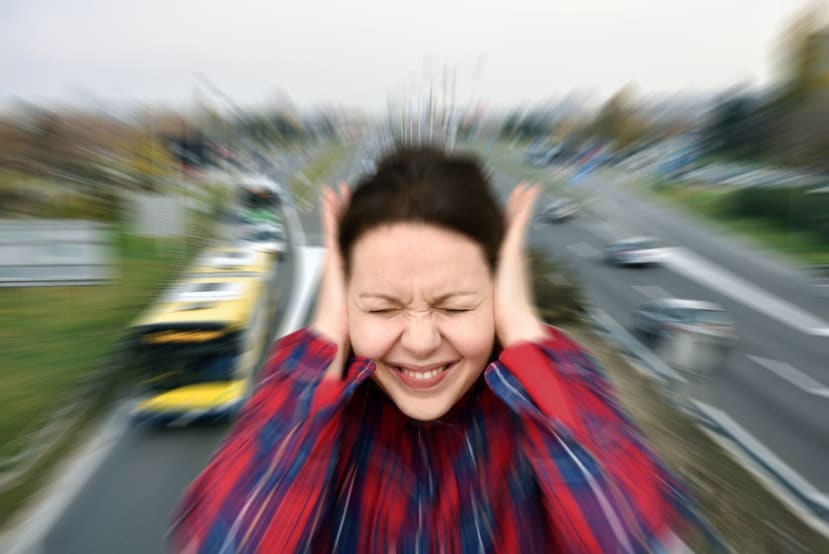The engineers quietly fixing noise pollution
Follow articleHow do you feel about this article? Help us to provide better content for you.
Thank you! Your feedback has been received.
There was a problem submitting your feedback, please try again later.
What do you think of this article?
Silence is golden – and becoming a scarce commodity.
Noise is all around us, even more so with the ever-increasing population and urbanisation. We’re continuing to contribute to noise pollution with aircraft, traffic, concerts and industrial noise, to name a few. Scarily the noise can be so common in everyday life, that we actually become desensitised to it.
Protecting our hearing from machinery in the workplace has been part of a responsible employers regime for decades, but what happens when noise pollution starts to invade our social spaces – just how concerned should we be?
What is noise pollution?
According to Encyclopaedia Britannica[1], noise pollution is defined as “unwanted or excessive sound that can have deleterious effects on human health, wildlife, and environmental quality”.
Measured in decibels, sounds are present throughout our environment from a thunderclap (120 decibels) to the rustle of leaves (20-30 decibels), or a rock concert (110-120 decibels). The recommended safety level before it starts to harm our ears is 85 decibels or higher – so think on next time you ride the tube (90-115 decibels) or use your lawn mower[2](90 decibels)!
Why then should we care?
Well, to start off with, did you know that according to findings by the World Health Organisation (WHO), noise is one of the biggest environmental causes of health problems, second only to air pollution?[3]
Noise Induced Hearing Loss (NIHL) is the most common health problem it causes, but scarily in Europe alone, it has been attributed to 12,000 premature deaths annually, while causing another 6.5 million more people to suffer chronic sleep disturbance[4].
Hard to hear right? (excuse the pun), but noise impacts your health much more than you think, here’s a few more examples to consider[5]:
- Cardiovascular disease – can be caused by chronic stress through noise, leading to higher blood pressure.
- Diabetes – as strange a connection as it seems, for every 5 decibels of noise the risk of type 2 diabetes can increase by 6%, due mainly to the raised stress hormones that can lead to insulin resistance with long-term exposure.
- Pregnancy – Long-term exposure to noise pollution can have an effect on the size of the developing foetus. Again, the increase in stress hormones can make it smaller and therefore impact the birth weight.
- Stress – this is the biggie! We can all suffer from stress in our lives, but noise pollution will add to this, so it’s important to be aware of the noise around you and how it can affect your health.
- Communication – in particular, spoken communication. Noise can cause a lack of concentration, irritation, fatigue and the misinterpretation and understanding of normal speech - and that’s not because you can’t hear them, it’s more the long-term stress effects exposure can have on your mental well-being.
- Sleep deprivation – Your mind is constantly on red alert, even when you sleep, so noise can put it into a ‘fight of flight’ mode and reduce quality sleep. Noise during sleep will also raise your blood pressure, increase your heart rate and cause changes in your breathing.
- Impaired performance – particularly relevant where children are affected. It can reduce concentration at school, have an impact on reading skills, problem solving and memory – all of which can lead to errors and potential accidents.
And that’s just the tip of the iceberg, the European Environment Agency has produced a full assessment on the health risks, which you can read here. So, I think you get the picture – there’s a LOT of implications to people’s health brought on by noise pollution.
What’s being done about it?
The World Health Organisation has produced guidance on environmental health for Europe[6] and huge amounts of euros are being spent on noise control under the EU Directive on Environmental Noise. As a result, steps are being taken in cities and countries to help reduce noise pollution, such as the installation of low-noise asphalt on road surfaces and the promotion of electric cars, for example. We’re also seeing an increase in the creation of ‘quiet spaces’, such as parks or nature reserves. All heading in the right direction, all well and good, but reducing noise is one thing but how can we reach the levels that will actually improve the quality of life?
This is where engineers come in - quietly working in the background to find solutions, all of which you can find more about in our DesignSpark podcast here, so here’s a taster, as way of an introduction:
Mumbli is a hearing wellness company. Their goal is to help people with hearing challenges integrate comfortably within social spaces, as well as improve audio accessibility. Did you know that 86% of adults have left social spaces because of the noise?
Using their state-of-the-art technology in the form of sound monitoring sensors, they are able to assess noise levels and acoustic performance within specific areas. From their data, they can help venues make informed decisions when it comes to solving the problem of noise and improved accessibility. In the podcast, you’ll hear founder Marion Marincat explain his journey with Mumbli, driven by his own hearing challenges.
Our other engineers work at University College London (UCL). They are conducting ‘soundscape’ experiments and research covering public spaces, as a basis for environmental design and social engineering. Their ground-breaking work is looking to create a ‘soundscape indices’, to complement the traditional measurement in decibels, to deeper reflect human levels of comfort and the noise in our lives. All sounds pretty complex and it is! But, with an increasing population and continued urban development, the work they are doing will be vital for the design of our future spaces.
Take a listen to the podcast to hear in detail about some of the experiments they conduct – it’s amazing stuff.
So, in essence, noise pollution is a growing problem. It affects us all, just being aware of the noise around you is key to understanding how it may be impacting your health and wellbeing. Luckily, engineering and technology are playing their part in mitigating how it shapes our future.
A challenging mission – but let’s not shout about it too loudly!
Sources:
[1] Noise pollution | Definition, Examples, Effects, Control, & Facts | Britannica
[2] Noise Pollution (nationalgeographic.org)
[3] Noise pollution is a major problem, both for human health and the environment — European Environment Agency (europa.eu)
[4] https://www.eea.europa.eu/publications/health-risks-caused-by-environmental/health-risks-caused-by-environmental
[5] The Medical Effects of Noise Pollution - Noise Project
[5] Noise Pollution: A Modern Plague (nonoise.org) ‘Adverse Health Effects of Noise’
[6] Guidance on environmental noise (who.int)
We would like to credit 'Chris Armstrong' as the researcher for this article.







Comments